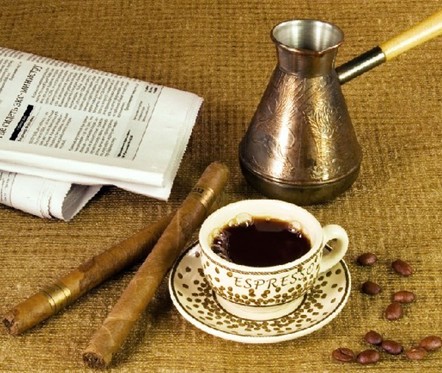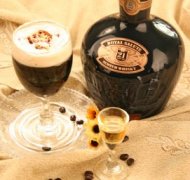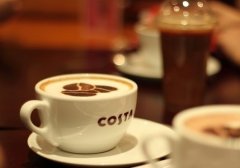How about coffee at Manor Atlanta, Jamaica? how many flavors are there for coffee beans?

Professional barista communication, please pay attention to coffee workshop (Weixin Official Accounts cafe_style)
How about Jamaica Atlanta Manor Single Coffee Atlanta Manor Single Coffee Bean How many flavors
BLUE MOUNTAIN
Blue Mountain Coffee, the most successful production in coffee history, Jamaica This particular region has been well defined and well protected. Only in Saint Andrew, Saint Thomas, Portland and Saint Mary can coffee grown at altitudes between 900 and 1500 metres (3000 and 4900 feet) be called "Jamaica Blue Mountain." Coffee grown between 450 and 900 meters (15,003, 000ft) above sea level is known as Jamaica High Mountain, while coffee beans grown below these areas are known as Jamaica Supreme or Jamaica Low Mountain. The traceability of Blue Mountain coffee can cause some confusion, as most coffees are sold according to the name of the plant where they were processed. These factories may occasionally buy coffee from a single large estate, but usually they buy it from the countless small farmers in the area. Jamaica's Blue Mountain coffee has long been exported to Japan in small barrels rather than sacks. It is also worth mentioning that because Blue Mountain coffee can soar in price, there are usually a large number of imitations on the market.
Altitude: 900- 1,500 m
Harvest: June-July
Varieties: Jamaica Blue Mountain (a Type derivative), Type
Blue Mountain coffee is also grown on small estates such as Wallenford Estate, Silver Hill Estate, and J. Martinez's Atlanta Estate. Even the largest planters in the region are small-scale farmers by international standards, many of whom are smallholders whose families have worked the land for two centuries. The coffee industry in Jamaica faces a number of problems, such as the effects of hurricanes, increased labor costs and difficulties in mechanizing terraces. Many small estates and farms are difficult to rationalize.
Blue Mountain Coffee, however, is one of those coffee retailers that value credibility and want to stock some coffee anyway. A leading British retailer says he will continue to sell Blue Mountain coffee all year round regardless of price because he has many customers who only recognize Blue Mountain.
Coffee first appeared on the island of Jamaica in 1728 from Latin America's Haiti. By 1790, refugees from Haiti included coffee farmers who settled in the Blue Mountains and brought coffee growing techniques to the region. Slavery was abolished in Jamaica in 1838 and freed slaves were allowed to farm their own land. Freed slaves moved to the mountains to grow coffee and export it to England. Coffee became known for its appreciation by the British upper class. This coffee is the Blue Mountain coffee that today fascinates coffee lovers all over the world.
Traditional manufacturing techniques
Blue Mountain Coffee can maintain today's premium status, but also inseparable from the local business policy. In 1932, Jamaica adopted a policy to encourage coffee production, reducing the island's dependence on sugar exports. The local government did not plant a large number of high-quality coffee in order to increase production value, as most coffee-producing countries did. Instead, it preferred quality to be superior, preferring to sacrifice coffee production to ensure the quality of blue mountain coffee. As a result, Jamaica is currently one of the world's low coffee producers. Brazil, the world's largest coffee exporter, produces 30 million bags of coffee a year, while Blue Mountain produces only about 40,000 bags a year.
In addition, the processing of Blue Mountain Coffee is also very elegant. Strict and detailed standards have been formulated for processing, baking, packaging, etc., and there are regulations on what organic fertilizers need to be used during the growth period. All are harvested manually. Jamaica was also the last country to still ship coffee in traditional barrels.
Only after passing this series of stringent standards stipulated by the Jamaica Coffee Industry Board can coffee receive a government certificate and officially be named "Blue Mountain."
Americans don't drink Blue Mountain coffee.
The United States is a coffee-loving country, but reporters in Houston several major supermarket chains and Starbucks coffee shops did not find "coffee beauty" trace. Starbucks coffee in downtown Houston is made mainly from beans from Africa, Colombia or Indonesia, according to a waiter. Blue Mountain coffee is relatively rare in the market, 90% of Blue Mountain coffee is occupied by Japanese. At present, the market to see the "Blue Mountain" coffee does not contain a positive Blue Mountain coffee beans. There is a "Jamaica Blue Mountain Blend" coffee that is a blend of 30% Blue Mountain coffee and 70% of the best Jamaica alpine coffee. Both of these coffees attempt to mimic the taste of Blue Mountain coffee, but fail to achieve perfection.
The reporter interviewed several customers near the coffee shop, some of whom had not even heard of Blue Mountain Coffee. Blue Mountain coffee is "cold reception" in the United States, and Americans drink coffee habits related. Since the 1970s, flavored coffee has gradually become a favorite coffee in the United States. It is made by adding spices to coffee beans or adding a seasoned coffee mate to brewed coffee. There are hundreds of flavored coffees, and the most popular in the United States are vanilla, hazelnut and almond
Pure Jamaica Blue Mountain Coffee combines the unique sour, bitter, sweet and alcoholic flavors of coffee perfectly to form a strong and attractive elegant flavor that is unmatched by other coffees. Blue Mountain coffee lovers say: "It's a coffee beauty with all the advantages of good coffee in one." Jim, general manager of Pitt's Coffee and Tea Company, described Blue Mountain coffee as "aromatic, smooth, mellow, and precious to me." Because Blue Mountain Coffee tastes moderate and perfect, Blue Mountain Coffee is generally drunk as black coffee."
The best Blue Mountain coffee is undoubtedly one of the best coffee available. While price guarantees availability of Blue Mountain coffee, it does not guarantee the coffee's best flavor. It's also worth noting that this coffee tastes more expensive than it looks. To get its best flavor, you have to put in more beans than you drink other coffees, otherwise the flavor is a bit of a misnomer, so the real cost of flavor lies in adding 10 - 15% more beans than the coffee that costs next to it.
True Blue Mountain coffee is said to be made from the best green coffee beans in the region, and that's where the fun of tasting home lies. Its rich flavor, balance, rich fruit flavor and sour, can meet people's various needs. In addition, the flavor of high-quality fresh Blue Mountain coffee is particularly long-lasting, as drinkers say-endless aftertaste.
Jamaica Blue Mountain New Coffee Bean
The real Blue Mountain Coffee is one of the world's best grown coffees, and Jamaica's weather, geology and terrain combine to provide the ideal location. The ridge across Jamaica extends to the east of the island, and the Blue Mountains rise to more than 2100 meters. Cool, foggy weather and frequent rainfall have tempered this fertile land with rain. Here coffee trees are grown in mixed cropping, alongside banana and avocado trees on terraces.
A closer look at the myth of Blue Mountain coffee is necessary because images of the past and reality of today often do not coincide. In 1725 Sir Nicholas Lawes brought the first Blue Mountain coffee seeds from Martinique to Jamaica, where they were planted in St Andrew. Today, St. Andrew's is still one of the three largest growing regions of Blue Mountain coffee, the other two being Portland and St. Thomas. Within eight years, Jamaica exported more than 375 tons of pure coffee. Coffee production peaked in 1932, harvesting more than 15000 tons of coffee.
But by 1948, coffee quality had declined and Canadian buyers refused to renew the contract, so the Jamaica government set up the Coffee Industry Council to save the fate of premium coffee. By 1969, the situation had improved, as Japanese loans had improved the quality of production and thus secured the market. Even in 1969, Japanese coffee drinkers were willing to pay insurance for the coffee, but today it has reached the point of being a cult favorite.
By 1981, about 1500 hectares of land had been cleared for coffee in Jamaica, followed by investment in another 6000 hectares. In fact, today's Blue Mountain region is a small area of only 6000 hectares, and not all the coffee labeled "Blue Mountain" can be grown there. An additional 12000 hectares are devoted to growing two other types of coffee (non-Blue Mountain coffee): High Mountain Supreme and Jamaica Prime Washed Jamaican.
Jamaica Jamaica
Population: 2711000
Jamaica has only one coffee-growing area and is the most famous in the world.
Important Notice :
前街咖啡 FrontStreet Coffee has moved to new addredd:
FrontStreet Coffee Address: 315,Donghua East Road,GuangZhou
Tel:020 38364473
- Prev

What are the characteristics of coffee beans in Atlanta, Jamaica? how much is the coffee in Atlanta?
For the exchange of professional baristas, please follow the coffee workshop (Wechat official account cafe_style) what are the characteristics of coffee beans at Atlanta Manor in Jamaica? how much is the coffee at Atlanta Manor? some small estates also grow Blue Mountain coffee, such as Wallenford Manor (Wallenford Estate), Silver Hill Manor (Silver Hill Estate) and Art of J.Martinez.
- Next

The coffee producing area of Atlanta Manor, Jamaica introduces the elevation of coffee beans in Atlanta Manor.
Exchange of professional baristas Please pay attention to Coffee Workshop (Wechat official account cafe_style) Coffee production area of Atlanta Manor Coffee on Atlanta Manor Coffee area, but by 1948, the quality of coffee had declined and Canadian buyers refused to renew their contracts, so the Jamaican government set up the Coffee Industry Committee to save the fate of top coffee. By 1969, love
Related
- Does Rose Summer choose Blue, Green or Red? Detailed explanation of Rose Summer Coffee plots and Classification in Panamanian Jade Manor
- What is the difference between the origin, producing area, processing plant, cooperative and manor of coffee beans?
- How fine does the espresso powder fit? how to grind the espresso?
- Sca coffee roasting degree color card coffee roasting degree 8 roasting color values what do you mean?
- The practice of lattes: how to make lattes at home
- Introduction to Indonesian Fine Coffee beans-- Java Coffee producing area of Indonesian Arabica Coffee
- How much will the flavor of light and medium roasted rose summer be expressed? What baking level is rose summer suitable for?
- Introduction to the characteristics of washing, sun-drying or wet-planing coffee commonly used in Mantenin, Indonesia
- Price characteristics of Arabica Coffee Bean Starbucks introduction to Manning Coffee Bean Taste producing area Variety Manor
- What is the authentic Yega flavor? What are the flavor characteristics of the really excellent Yejasuffi coffee beans?

